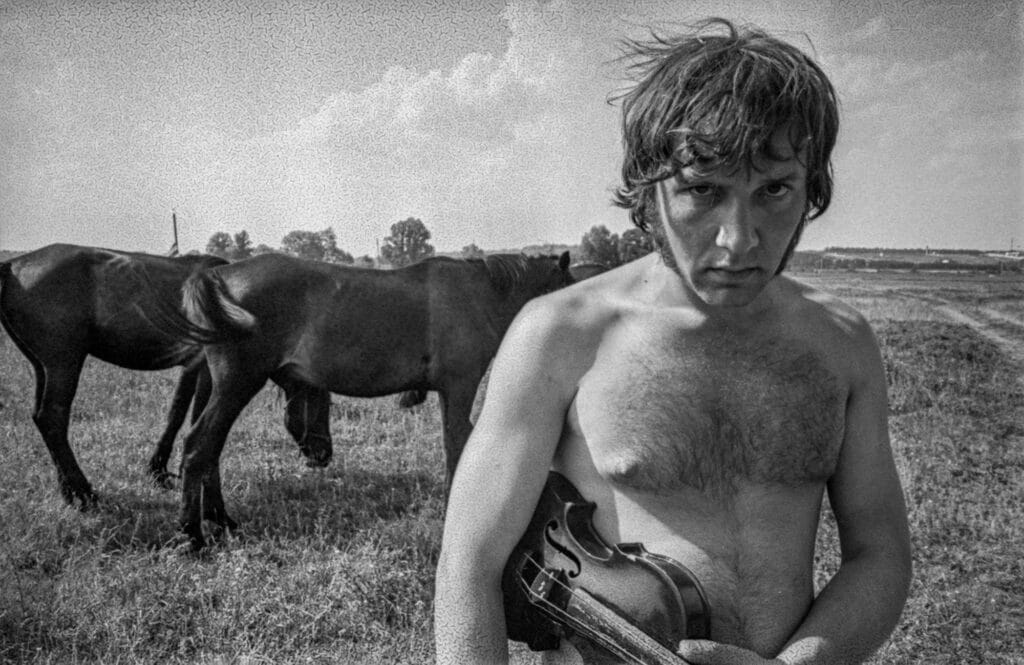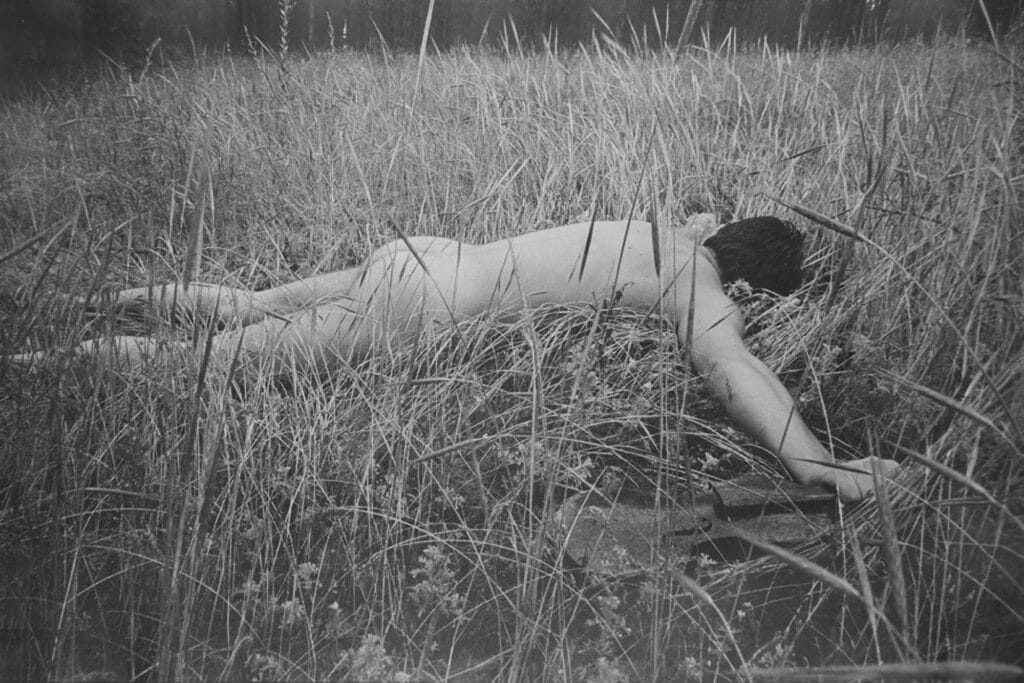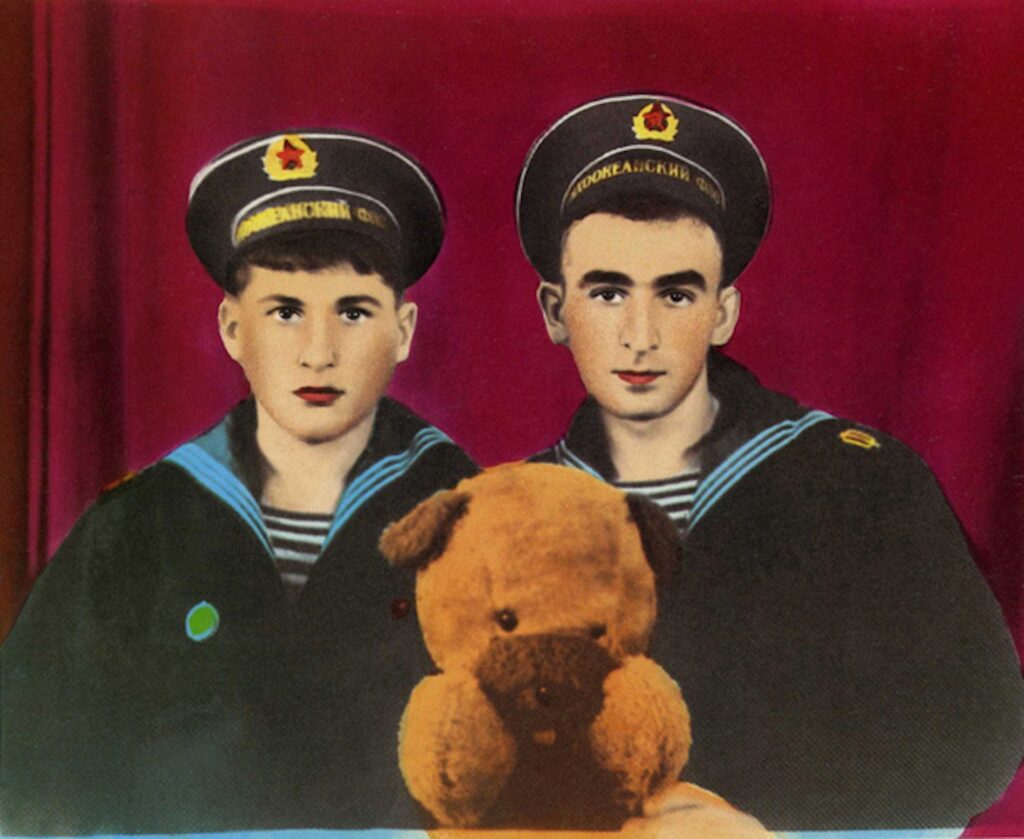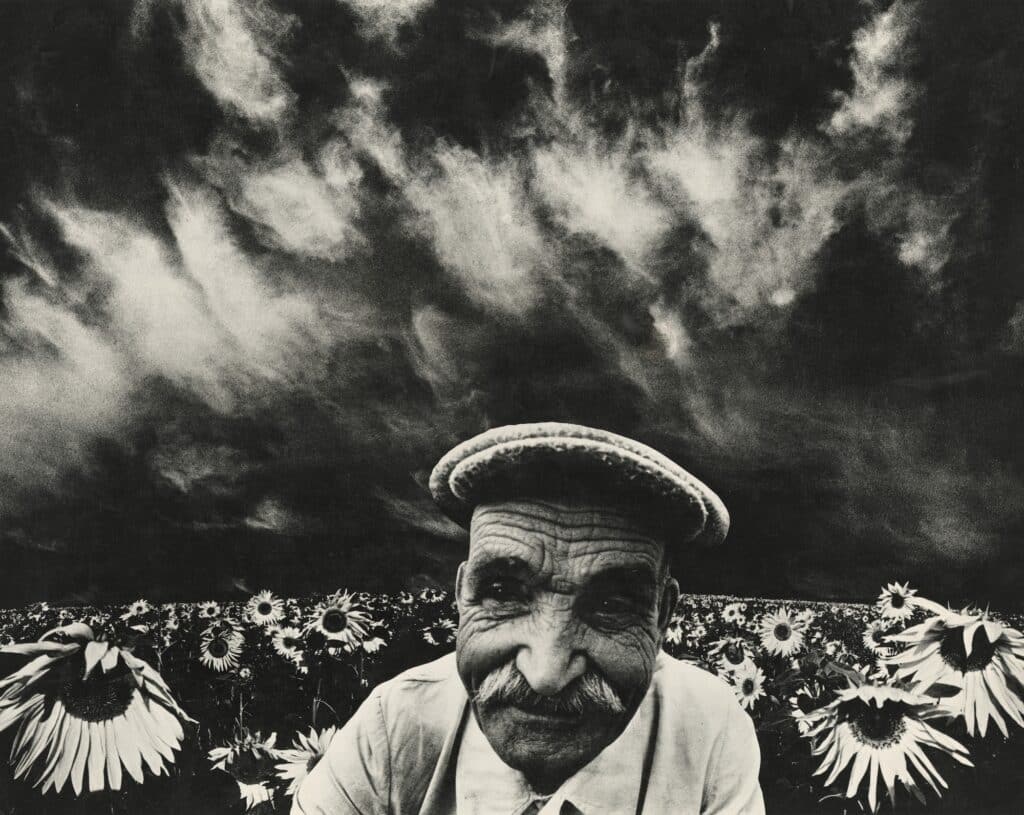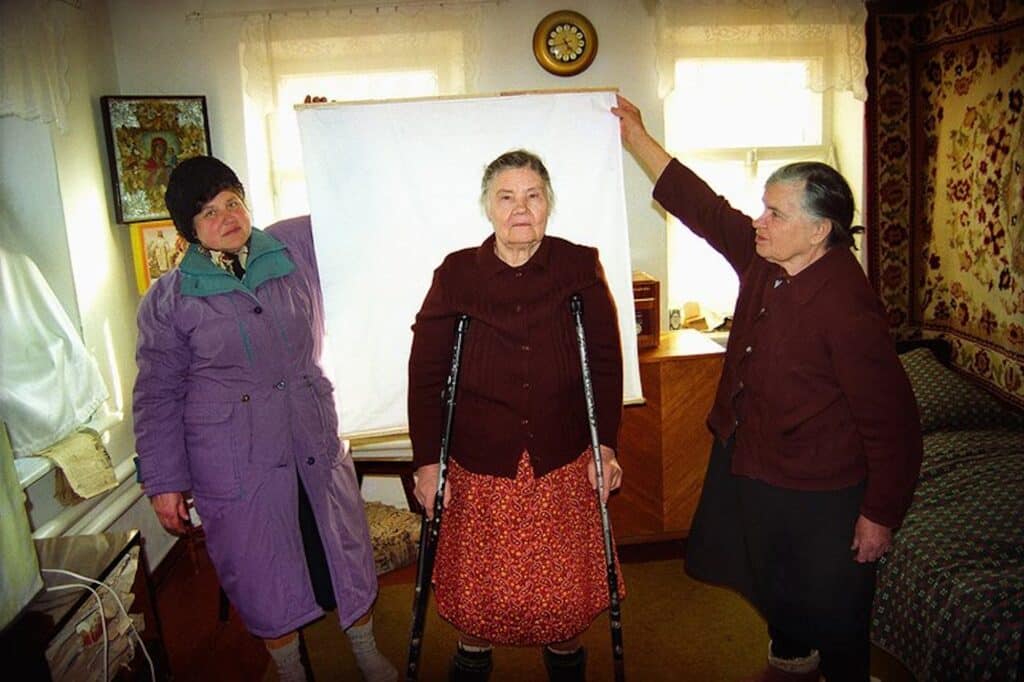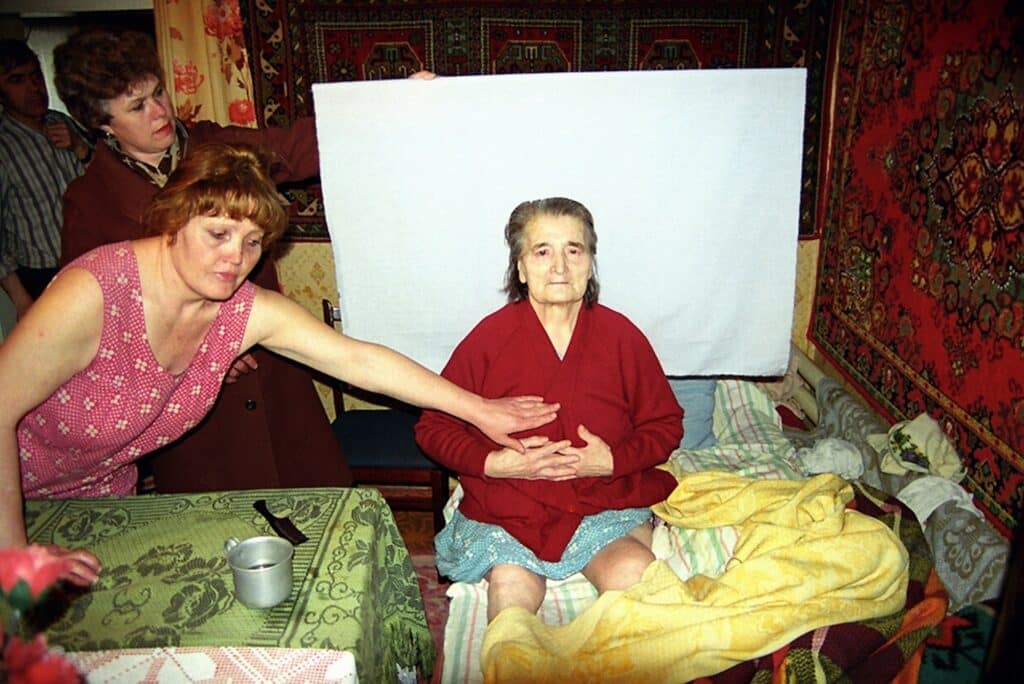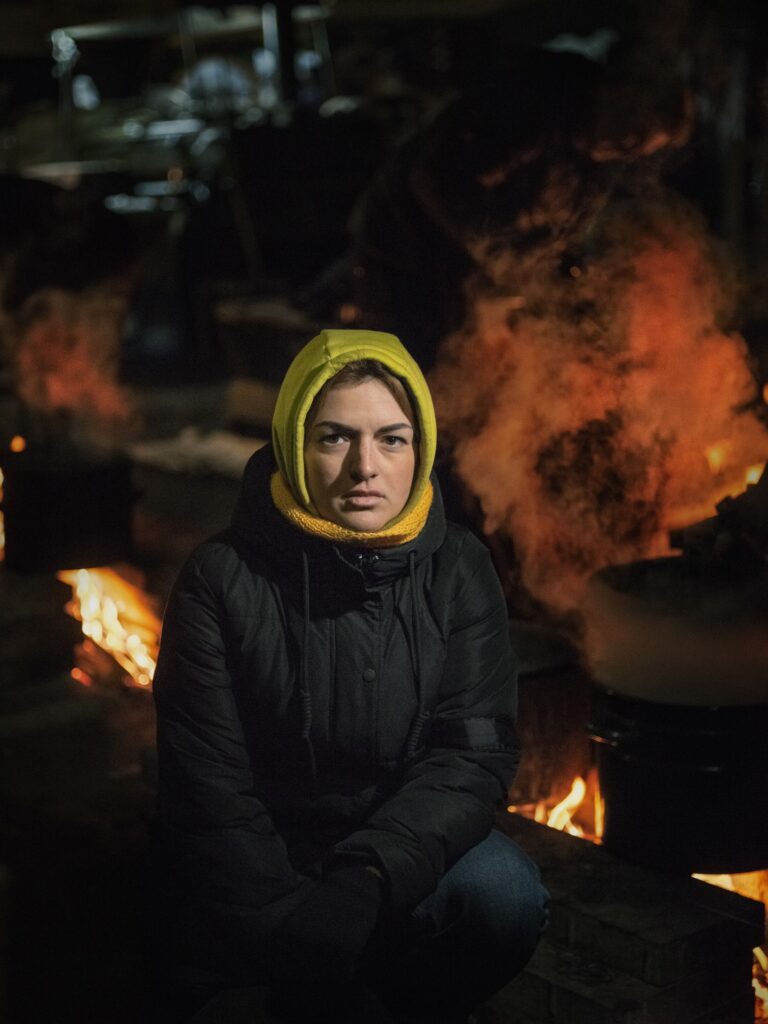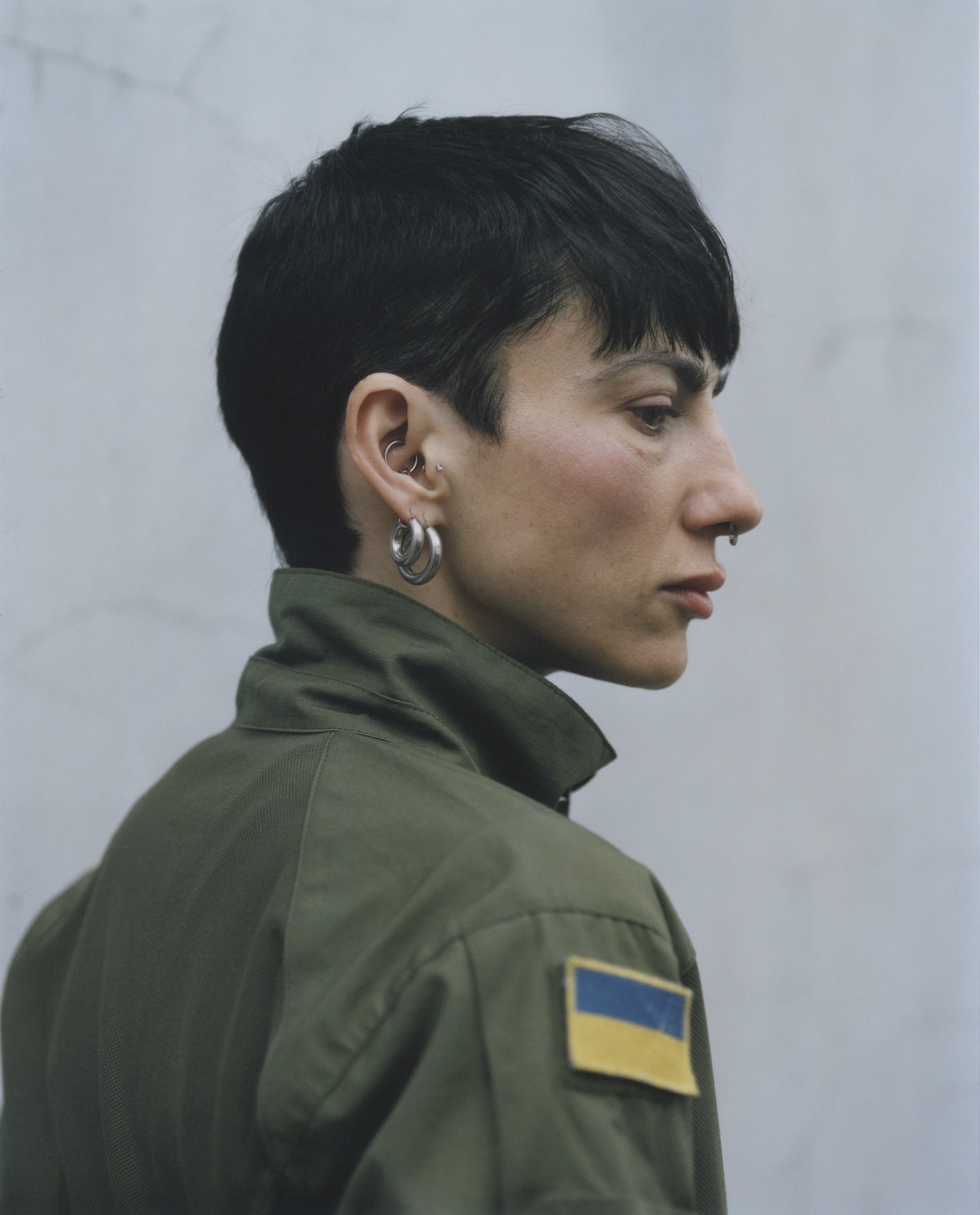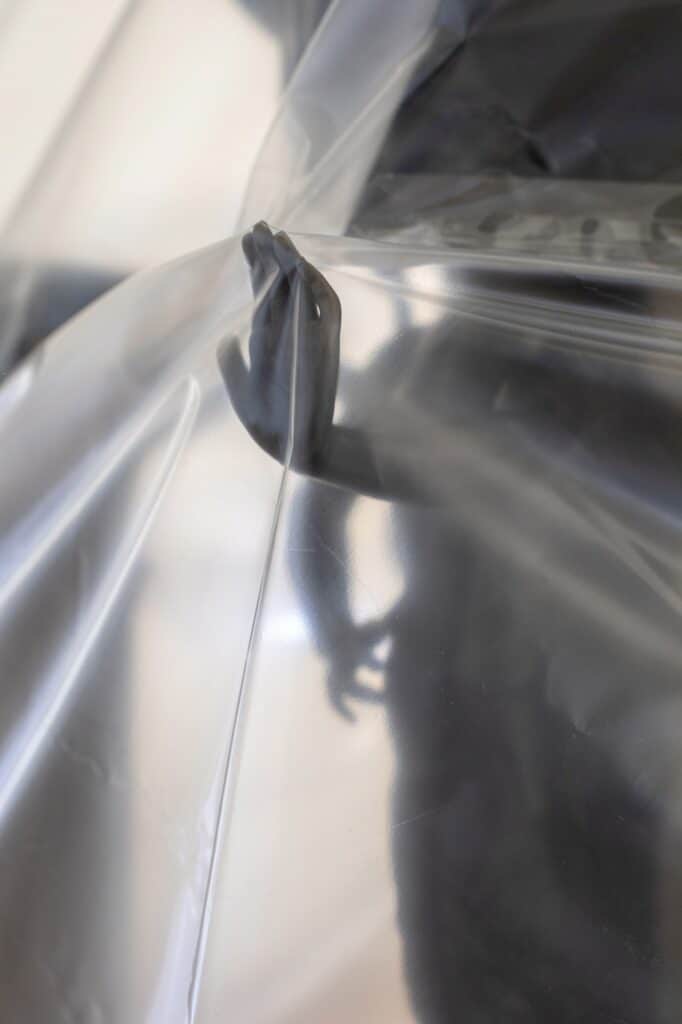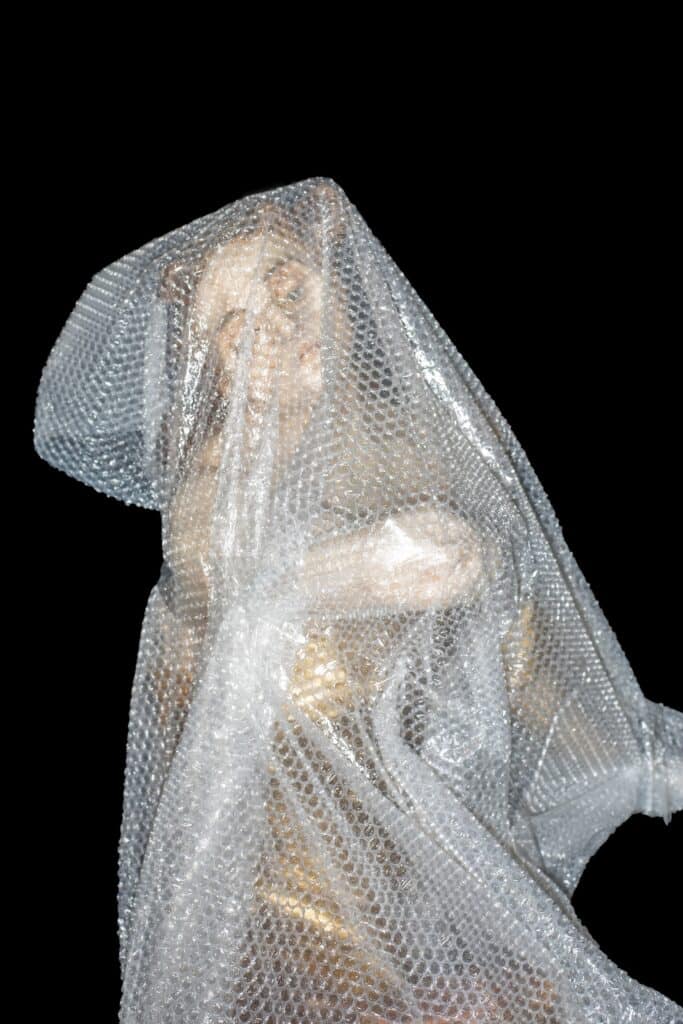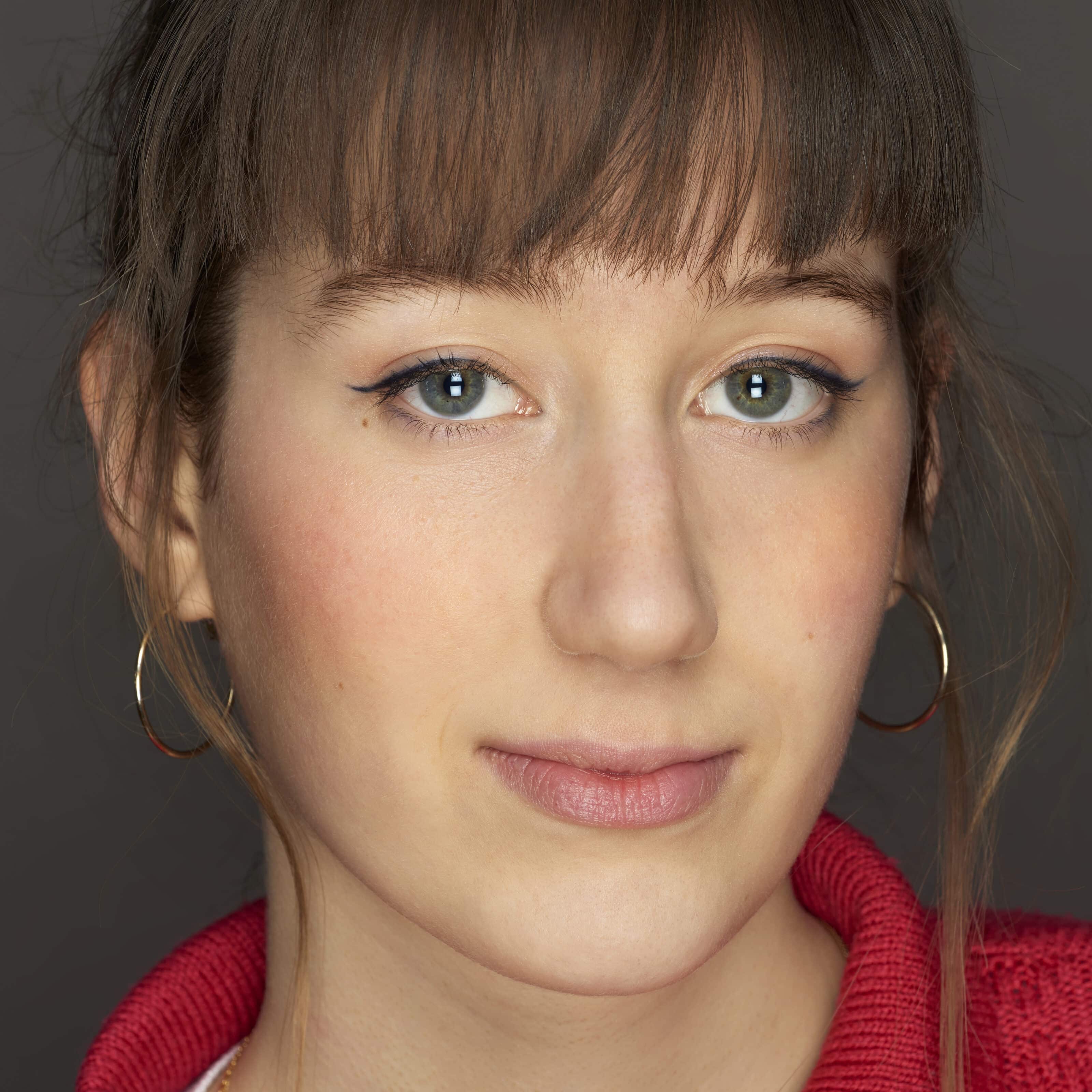By many accounts, today’s Russian-Ukrainian war is one of the most well-documented in history. The online media are saturated with images of violence, creating an atmosphere of familiarity with a war that can only be understood if it has been experienced. In this complex context, the question arises of what to show and what not to show. This exhibition in Brussels takes a deliberately restrained approach, avoiding a display of the horrors of war. Instead, its main aim is to highlight the links between generations of artists and the evolution of their artistic practices, all influenced by conflict. History and art enter into a symbiotic relationship, making Ukrainian photography a faithful reflection of the country in social and political terms.
With 22 Ukrainian photographers on show, the Hangar focuses on the work of the Kharkiv School of Photography, looks back at the history of Ukraine under the Soviet regime, while highlighting a new generation of Ukrainian photographers. In this particular context, the exhibition is positioned as a visual testimony, not only to the reality of war, but also to the resilience and artistic evolution of a nation shaped by the circumstances of its time.
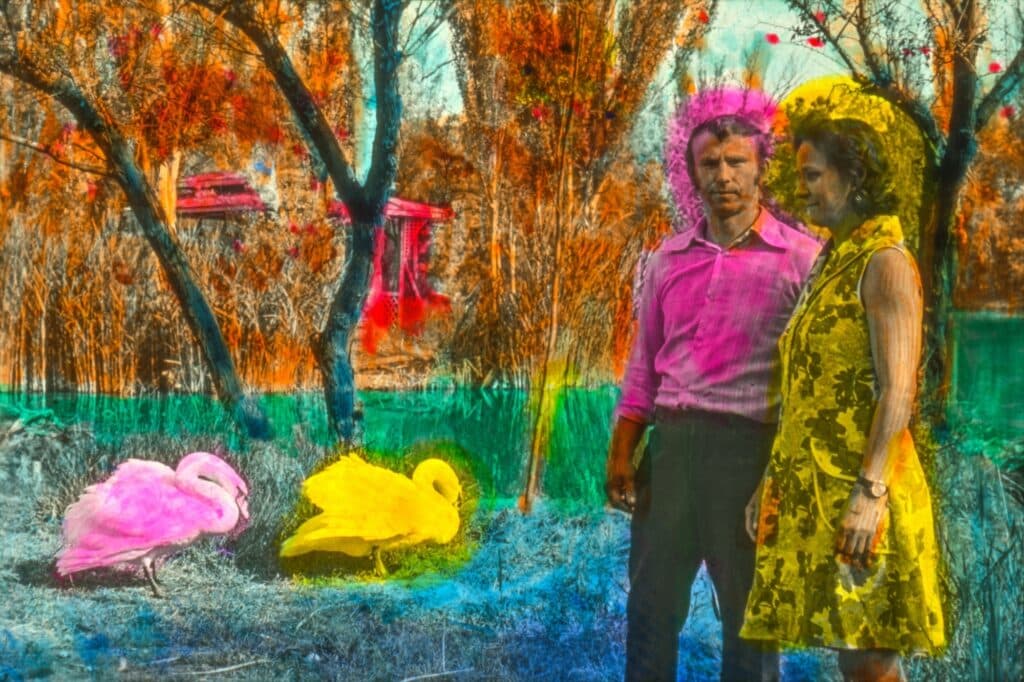
Photography as a weapon
The exhibition starts with images that could not have been exhibited in Eastern Europe in the 1970s. And yet there’s nothing shocking about them: markets, railway stations and a few nudes. But in the Soviet Union during the Stalinist period, visual depictions of alcohol, smoking, disease and nudity were subject to censorship. Photographers had to submit to the doctrine of socialist realism by depicting a strong, happy and proud USSR. In this Ukraine of total control, the city of Kharkiv saw the emergence of the Kharkiv School of Photography, an artistic movement resisting the existing ideology. The movement was founded by a group of eight photographers called “Vremia” (“Time” in Ukrainian).
Among them, Boris Mikhailov, Yevgeniy Pavlov and Oleksandr Suprun, exhibited at Le Hangar, used photography as a means of showing what was hidden behind the “official” ideology. Risking arrest by the KGB, Yevgeniy Pavlov and Boris Mikhailov broke the ban on nudity. The first, in 1972, with Violin, an emblematic series of ten images depicting naked young hippy men. The second came later, in 1986, with the Salt Lake series, in which he clandestinely photographed paunchy bodies on the shores of a lake beset by industrial pollution. Carefree, smiling men, women and children bathing in polluted water surrounded by factories.
In the Soviet Union, colour printing was expensive. A common technique was to colour photographs by hand to embellish the image of everyday life. In short, it was a form of visual propaganda. With a certain irony, the Kharkiv school reused the methods of the regime to better deconstruct it. The first half of the exhibition features found photos, collages and recoloured black and whites. There is, of course, Boris Mikhailov’s famous ‘Luriki’ series, a critique of the colourful, fake Soviet world. Then there are the photocollages by Oleksandr Suprun, in which he superimposes elderly people and children, two of his favourite subjects, on floral compositions. Going against the grain of Soviet propaganda glorifying mundane events, he depicts everyday life, trivial and unremarkable.
The cost of war
To understand contemporary Ukrainian photography, one needs to place it in its context: the war. These artists have all adapted to this new reality. Some have had to modify their practice, integrating elements of performance and video into their work, while others document their experience in a more personal way. When he talks about the impact of the war on his photography, Alexander Chekmenev asserts that “the most important thing is not to lose your own style, especially in times of conflict”. A deeply humanist style that he asserted at a very early age: “When I was 9 I already had a camera, and at the age of 11 I knew who I wanted to become”. Today, he has turned his camera into a means of fighting, because, as he says, “it shoots better than any other weapon”.
War or no war, Alexander Chekmenev has always focused on the human being. For 27 years, his work has revolved around two central themes: empathy and memory. As far back as the mid-1990s, Chekmenev joined the social workers responsible for taking passport photos of Ukrainian residents. He visited the homes of the elderly, infirm and frail, who were unable to go to photo studios. The photographer captures the faces of each person, but also everything outside the frame, behind the white background held by family members. The poverty of the interiors is revealed, without retouching or censorship. These portraits gave rise to his ‘Passport’ series, which, transcending the simple portrait, became a profound socio-cultural exploration of a newly independent Ukraine.
“no one is prepared for war; the people in the photos could have been us”
Alexander Chekmenev
Present in Brussels for the opening of the exhibition, Alexander Chekmenev left Kiev under the sound of bombs. Like many others, the Ukrainian photographer chose to stay in Kiev despite the attacks and tensions of the first month of the Russian invasion. This is precisely what he documents visually in his “Citizens of Kyiv” series, which was published in the New York Times Magazine on March 18, 2022, a few weeks after the beginning of the conflict. With over a hundred portraits, Chekmenev tells the individual stories of those who resisted. Each frontal image is imbued with the emotion and resilience of its subjects. As Chekmenev reminds us, “no one is prepared for war; the people in the photos could have been us”.
Art under the bombs
Behind Ukrainian photography, the history of the Ukrainian people is being written. A terribly uncertain future for its young generation, aged between 18 and 20, who have spent half their lives in wartime. Young people “irreversibly altered”, as the title of Daria Svertilova’s series suggests, and one of her photographs has been selected to be the festival poster. Originally from Odessa, Daria is only 27 years old. During the first year of the real war, while a student at the École Nationale Supérieure des Arts Décoratifs in Paris, she decided to photograph Ukrainian youth. She was particularly interested in student dormitories. Whether with posters, old second-hand treasures or plants, each person brings his or her own personal touch to bring a little life back to these cold, uniform rooms. On a small poster pinned between two polaroids, we can read the word “Peace”, a fragile symbol of hope stuck on a student wall.
While Kateryna Radchenko, curator of the exhibition and director of the Odesa Photo Days festival, reminds us of the importance of continuing to showcase Ukrainian art in times of war, the protection of Ukraine’s cultural heritage remains a major concern. Elena Subach reminds us of this in her series “Hidden”, which documents the measures taken to protect sculptures, works of art and artefacts in Lviv, one of Ukraine’s main artistic centres. Photographing the works like crime scene objects, she reminds us of their fragile, precious and ephemeral aspect.
Sergiy Lebedynsky, co-founder of the Museum of the Kharkiv School of Photography (MOKSOP), can testify to this. As a partner in the exhibition, the MOSKOP was able to lend most of the photographs on display at Le Hangar, thanks to the museum’s staff, who organised the evacuation of their collection and archives to Germany and Austria as soon as Russia invaded Ukraine. Without the exile of these works, the exhibition at Le Hangar would probably never have taken place.
“Generations of Resilience – 22 Ukrainian photographers”, a collective exhibition at Hangar Photo Art Center, Brussels, until 23 March 2024.

